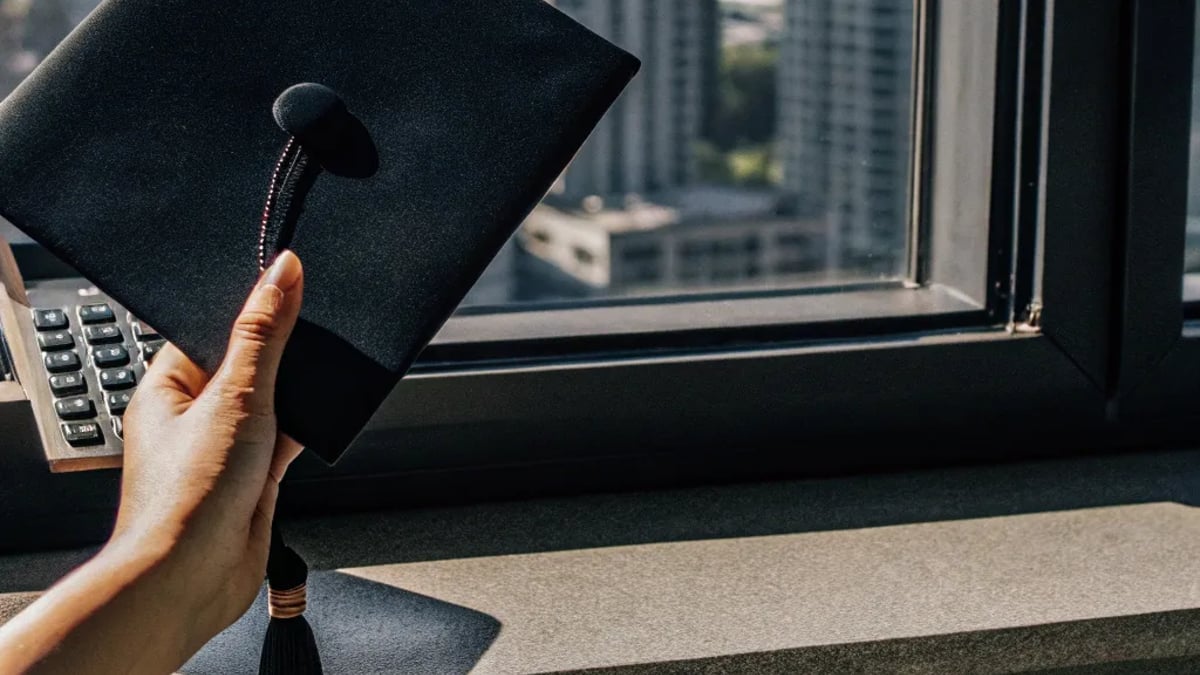
Graduating with student loan debt hanging over my head felt like carrying a backpack full of bricks everywhere I went. When I finally decided to tackle my $30,000 in student loans, I had no idea if it was even possible to eliminate them in under two years. But 18 months later, I made my final payment and experienced a financial freedom I hadn't felt since before college.
The Wake-Up Call That Changed Everything
I remember sitting at my kitchen table last February, staring at my loan statements and feeling that familiar knot in my stomach. My minimum payments barely touched the principal, and at that rate, I'd be paying until my 40s. The breaking point came when I calculated how much interest I'd pay over the life of the loans—nearly $12,000 on top of what I'd borrowed. That night, I decided something had to change.
My situation wasn't unusual. According to the Education Data Initiative, the average student loan borrower takes 20 years to repay their debt, with many paying thousands in interest along the way. I didn't want to be another statistic.
Starting Point: My Financial Snapshot

Before sharing my strategy, here's where I started:
- $30,000 in federal student loans (mix of subsidized and unsubsidized)
- $48,000 annual salary at a marketing firm
- $900 monthly rent (with a roommate)
- No major assets or other significant debt
- About $2,000 in savings
Creating a Payoff Plan That Actually Worked
The first thing I did was calculate exactly how much I needed to pay monthly to clear my debt in 18 months. The number was intimidating: $1,700 per month. That was nearly half my take-home pay at the time.
I knew I needed a three-pronged approach:
- Drastically reduce expenses
- Increase my income
- Stay consistent and motivated
Slashing My Expenses Without Living in Misery
I didn't want to live on ramen for two years, but I needed to find significant savings in my budget. Here's what worked for me:

Housing: I moved from my one-bedroom apartment to a shared house with two roommates, cutting my housing costs from $1,200 to $700 monthly. This single change freed up $500 every month.
Transportation: I sold my car and switched to public transit and occasional rideshares. Between eliminating car payments, insurance, gas, and maintenance, I saved roughly $350 monthly.
Food: This was tricky. I love eating out, but restaurant meals were destroying my budget. I compromised by limiting myself to one restaurant meal weekly and learning to cook simple meals at home. Monthly savings: approximately $200.
Subscriptions and entertainment: I went through my credit card statement and was shocked to find I was spending over $120 monthly on various subscriptions. I kept only Netflix (which I shared with family) and canceled the rest. For entertainment, I discovered free community events and the public library.
After these adjustments, I freed up nearly $1,100 monthly to put toward my loans. But I still needed more.
The Income Side: How I Made an Extra $15K
Cutting expenses only gets you so far. The real game-changer was increasing my income.
Side Hustles That Actually Paid Well
Rather than trying a dozen different gigs, I focused on leveraging my existing marketing skills:
- Freelance content writing: I created profiles on Upwork and Fiverr and started with small projects. Within three months, I had regular clients paying me between $800-1,200 monthly for blog posts and email newsletters.
- Weekend brand ambassador work: Those product sampling people at stores? I became one of them. The pay was surprisingly good—$25-30 per hour for weekend gigs, adding another $400-600 monthly.
- Social media management: I approached three local businesses without strong social media presences and offered affordable monthly packages. This brought in another $500 monthly once established.
These side hustles collectively added about $2,000 to my monthly income at their peak. It meant working 60+ hour weeks sometimes, but I kept reminding myself it was temporary.
Negotiating a Raise at My Day Job
Six months into my debt payoff journey, I approached my manager with documentation of projects I'd successfully completed and requested a performance review. This led to an 8% raise, adding another $320 to my monthly take-home pay.
How I Stayed Motivated When It Got Tough
Let's be real—there were plenty of moments when I wanted to quit. Here's how I kept going:
Creating Visual Reminders
I made a simple debt thermometer on my wall that I colored in each time I made a payment. Seeing that visual progress daily kept me focused when motivation waned.
Finding a Money Accountability Partner
A coworker was also paying off debt, and we became each other's accountability partners. We'd meet monthly over coffee (homebrew, not Starbucks!) to review progress and troubleshoot challenges.
Celebrating Small Milestones
I didn't wait until the end to celebrate. For every $5,000 paid off, I allowed myself a small but meaningful reward—like a day trip or a nice dinner out. These planned celebrations gave me something to look forward to without derailing my progress.
What About Emergencies? My Safety Net Strategy
One question I frequently get is how I handled unexpected expenses during this intense payoff period.
I maintained a modest emergency fund of $2,000 throughout my debt payoff journey. This wasn't the recommended 3-6 months of expenses financial experts suggest, but it was enough to handle most unexpected situations without derailing my debt payoff plan.
When my laptop died eight months in, I was able to cover the $900 replacement without touching my credit card. I then temporarily diverted some loan payments to rebuild my emergency fund before continuing.
Could This Work for You? Honest Assessment
My approach won't work for everyone. Several factors worked in my favor:
- I was single with no dependents
- I lived in a city with good public transportation
- My skills were in demand for freelance work
- I had no major health issues during this period
- My loans had reasonable interest rates (4-6%)
If your situation differs significantly, your timeline might need adjustment. The principles remain the same, but the execution will vary.
What Would I Do Differently?
Looking back, I'd make a few changes to my approach:
- Start with more emergency savings: The $2,000 emergency fund was barely adequate. I'd aim for at least $5,000 before going all-in on debt payoff.
- Be more strategic about side hustles: I tried a few gigs that paid poorly before finding my profitable niches. I should have researched earning potential more thoroughly upfront.
- Build in more rest: There were stretches where I worked 21 days straight. This led to burnout around month 10 that actually slowed my progress. Scheduled downtime would have been more efficient.
Life After Debt: What Freedom Feels Like
Making that final payment last August was surreal. I kept checking my loan balance, expecting to see some remaining amount.
The most significant change hasn't been what I can buy—it's been the mental freedom. I sleep better. I make career decisions based on growth potential rather than just salary. I'm building wealth instead of just servicing debt.
Within three months of paying off my loans, I built a proper emergency fund covering six months of expenses. Now I'm saving for a down payment on a home while contributing 15% to retirement accounts.
Common Questions About Rapid Debt Payoff
Is it better to invest or pay off student loans quickly?
This depends on your loan interest rates and risk tolerance. My loans averaged 5.5% interest, which meant paying them off was like getting a guaranteed 5.5% return on my money. While the stock market might average higher returns long-term, the guaranteed return and psychological benefit of debt freedom made accelerated payoff the right choice for me.
According to financial planner Michael Kitces, "The mathematical optimal choice isn't always the behaviorally optimal one." For me, the certainty of debt freedom outweighed potential investment returns.
Did you use any special repayment methods like avalanche or snowball?
I used the avalanche method, targeting my highest-interest loans first while making minimum payments on the others. This saved me about $340 in interest compared to the snowball method, according to calculations I ran on Unbury.me.
That said, the snowball method (paying smallest balances first) provides quicker wins and might be more motivating for many people. The best method is ultimately the one you'll stick with consistently.
Disclaimer: This article reflects my personal experience and is for informational purposes only. It is not intended as financial advice. Everyone's financial situation is unique, and what worked for me may not be appropriate for your circumstances. Consider consulting with a financial professional before making significant financial decisions.
Tags

About Elliot Drake the Author
Elliot Drake has over a decade of experience in financial literacy education and is a renowned authority on personal-finance-journals. His insightful approach to budgeting and goal-setting through journaling has helped thousands achieve financial clarity and freedom.
Recommended Articles
6 Older Tech Items That Collectors Are Interested In
Explore six older tech items that collectors cherish for their nostalgia and historical significance, from classic cameras to early mobile phones.
Dinosaurs and Child Intelligence
Explore how children's fascination with dinosaurs may enhance cognitive skills and intelligence during crucial developmental years.
Research shows mothers experience nearly double the stress when raising daughters compared to sons
Research shows mothers raising daughters experience nearly double the stress compared to those with sons, highlighting unique parenting challenges.
How to Spot Early Signs of Osteoporosis
Learn how to identify early signs of osteoporosis and the importance of prevention and treatment for maintaining bone health.
How to Find Quality Pickup Trucks at Police Sales
Discover how to find quality pickup trucks at police sales and save money while ensuring reliable vehicles through proper inspection and research.




